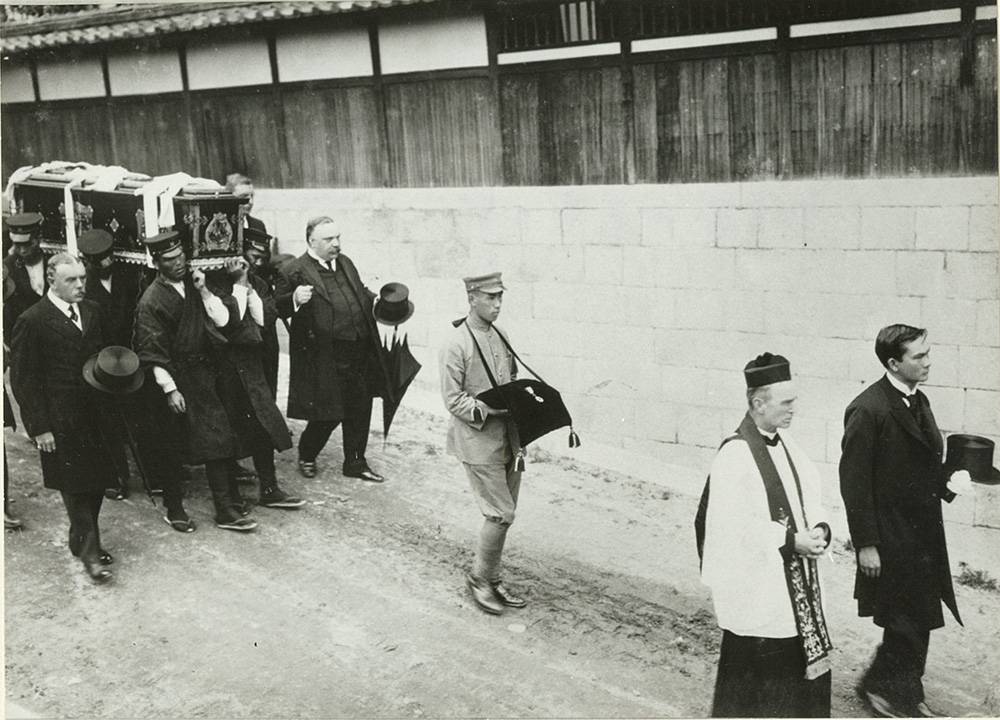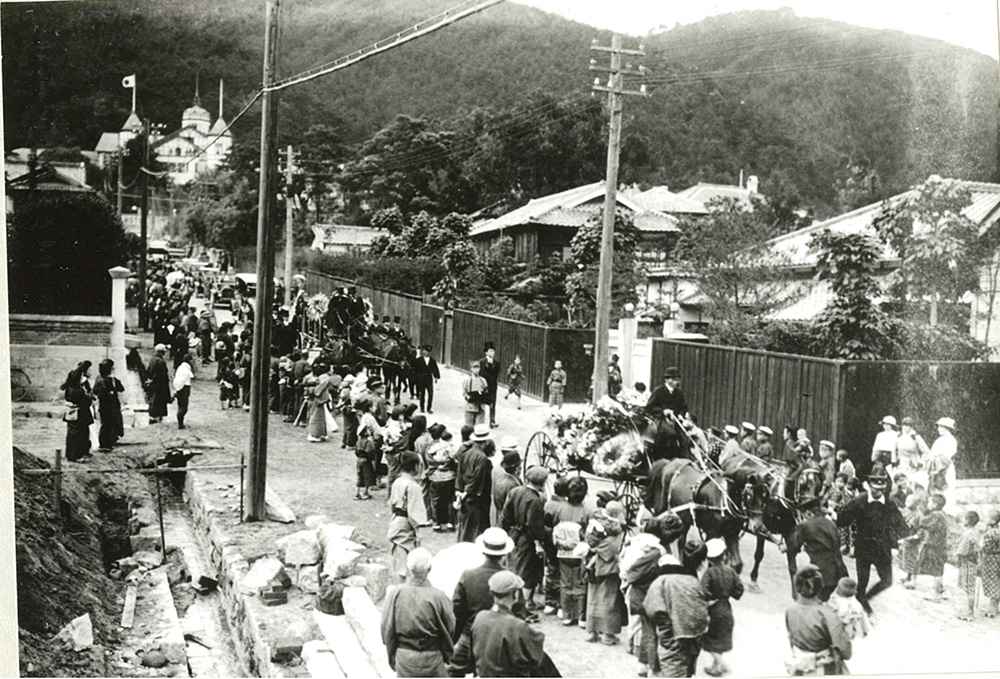5. E. H. Hunter, a man with Japanese spirit and Western technology(part 1)

E.H. Hunter entered into eternal rest at eight in the evening on June 2, 1917. He was 75 years old. The newspaper at the time says, "As many as several hundred eminent citizens, both Japanese and foreign, including prominent merchants and women of various groups, were in attendance . . . and over two hundred floral wreaths were laid," and many mourners "wept as they recalled the life of the deceased." Although Christian funeral rites were observed, banners of the Buddhist Women's Association were held during the procession.(1) One obituary reflects, "Hunter was a self-made man who traveled from the United Kingdom to Japan without possessions, made strenuous efforts for the business world of our country for over ten years, and amassed a colossal fortune."(2)

To say that Hunter achieved great success as a foreigner in Japan, not only financially but also socially, is not an overstatement. The road to success, however, was by no means smooth. From the very first year after Osaka Iron Works commenced operation, Hunter and Seijuro Akizuki undertook a variety of other businesses. They tried their hand at antimony mining and refining, but the plans fell through. They opened a rice mill, but it burned down in a fire. Finally, their attempt at papermaking failed, and in 1884, Hunter transferred Osaka Iron Works to a wealthy Osaka merchant named Saburobei Kadota.(3)
The Hundred Year History says that a lack of reliable protection left Hunter with no choice but to create and build everything himself and bear any hardship single-handedly. Under these circumstances, Hunter's "indomitable pioneering spirit grew ever stronger."(4) In 1885, Hunter resumed management of Osaka Iron Works and set out to reconstruct the business. He carried out dramatic reforms. A news report from 1886 says that Hunter "dismissed all foreigners and entrusted shipbuilding exclusively to Japanese workers . . . as it turned out, construction progressed smoothly and business gradually prospered to the point that future construction of steel ships" was in the planning.(5) Osaka Iron Works went on to grow into one of the three major shipbuilders of Japan.
A pioneering spirit was vital to this level of success. That much is certain. But that was not enough. Hunter's other significant recipe for success was his respect for Japan and the Japanese people. He chose Aiko Hirano to be his wife and together had a family of children. He selected Akizuki to be his business partner and carried out reforms to place shipbuilding operations in Japanese hands. And even though he built a Western-style residence, in his latter years, he lived in a Japanese-style residence and planted a flowering cherry tree in the garden. From this, one can infer that Hunter had a deep understanding of Japanese society, economy, and culture, and had firmly rooted himself in it.
Bibliography
- 1「ハンター氏葬儀」朝日新聞、大正6(1917)年6月6日、大阪版
- 2「成功者の三幅対–逝けるハンター氏-」朝日新聞、大正6(1917)年6月4日、大阪版
- 3『日立造船百年史』昭和60年、日立造船株式会社、12~13p
- 4『日立造船百年史』昭和60年、日立造船株式会社、12~13p
- 5「安治川鉄工所」朝日新聞、明治19(1886)年2月20日、大阪版
なお、『日立造船百年史』の18pも参照
Click here for various inquiries
- 1. Maizuru Maru
- 2. Hunter and Aiko
- 3. E.H. Hunter & Co. at Kobe Foreign Settlement No. 29
- 4. Rokko Maru: Wooden steamship on the "golden route"
- 5. E. H. Hunter, a man with Japanese spirit and Western technology(part 1)
- 6. Japanese spirit, Western technology (part 2)
- 7. Bronze statue of E.H. Hunter (part 1)
- 8. Bronze statue of E.H. Hunter (part 2)
- 9. Temple bell tuned to 122 cycles with Shosoin flute
